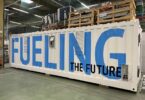Electric cars, solar panels, lithium-ion batteries and plant-based burgers are not enough to offset climate change. Getting to Net Zero will require radical innovation to find alternative approaches to all carbon-spewing processes, including some of the biggest ones like cement and steel production, says Microsoft co-founder and philanthropist Bill Gates, who this week did a blitz of media interviews to promote his new book “How To Avoid A Climate Disaster.“
The effort will need scientific breakthroughs, technological innovations and global cooperation on a scale the world has never seen. “Entrepreneurs and investors need to build new businesses, government needs to adopt new policies and advocates need to hold us all accountable,” Gates said during a Feb. 17 virtual webinar attended by The Innovator. The challenge, he says, is greater than landing on the moon or putting a computer on every desk. “It is very novel for the world to need innovation by a certain deadline,” Gates said. “And yet by 2050 if we don’t get to Net Zero the temperature rise will be so damaging life will get worse for humans.”
Accelerating innovation will require a huge amount of capital and an all-hands-on deck effort by entrepreneurs, investors, large corporates and governments. Gates is investing $2 billion of his own money and has recruited billionaires who can afford to lose tens of millions of dollars to contribute to a fund called Breakthrough Energy Ventures. He recently raised a second $1 billion Breakthrough Energy Ventures fund, backed largely by the same group of investors. And, in February, as his book was about to launch in stores, Gates was preparing to launch two new facets of Breakthrough Energy, an umbrella organization that includes the venture funds, including a series of philanthropic fellowships in green industries for post-graduate technologies and business leaders, according to an in-depth story in The Wall Street Journal about the book launch. Another program, Breakthrough Energy Catalysts, will sell real carbon-offsets to help fund market- ready technologies such as aviation biofuel refineries while enabling high-net worth individuals, companies and institutions to meet climate pledges.
Lowering costs and increasing energy efficiency and reliability will be key. Gates points out that the design of nuclear power plants has not changed since the 1950s. He is backing TerraPower, a U.S.-based developer of safer nuclear energy he co-founded in 2008 with an investment of $500 million.
And, he said during the February 17 webinar, attention should be paid to green hydrogen. “Almost half of [emissions from] the manufacturing sector is solvable if that price is super low,” Gates said.
Gates’ investments include CarbonCure, which injects captured carbon dioxide into cement. Since carbontech recycles waste carbon that would otherwise perpetuate climate change it promises to go a long way towards improving the environment. For example, for every ton of cement produced a ton of CO₂ is released into the atmosphere, making the concrete industry responsible for 5% to 7% of total carbon emissions and up to half of industrial energy use in emerging nations. Along with CarbonCure, a number of startups, including the U.S.’s Solidia Technologies and Australia’s Mineral Carbonation International, are aiming to make cement that takes carbon out of the atmosphere rather than adding to it.
Carbontech, which impacts both global commodities and high-value consumer goods, is an emerging industrial sector that captures, transports, and converts different forms of “waste carbon” into a diverse array of valued products and services in a climate-beneficial way.
Direct air capture (DAC), the process of separating CO₂ from air or seawater, is one promising approach. Depending on how it is implemented, DAC can boost companies and whole sectors from net-zero emissions into net-negative territory. Key applications for DAC include the food and beverage market, carbonate and urea production , enhanced oil recovery, carbon-removal services, and CO₂ conversion to products for large markets, such as concrete and other carbonaceous building materials, commodity chemicals, and fuels. However, succeeding at scale will require materials, devices, and systems beyond what exists today, according to a 2020 story about the carbon economy in The Innovator.
Getting there won’t be cheap. Removing carbon from the atmosphere currently costs at least $200 a ton, the Wall Street Journal reported in its story about Gates’ new book. Gates says he thinks it is possible to cut that cost in half but even if that is achievable removing 51 billion tons of emissions per year at $100 per ton would require spending $5.1 trillion per year, or 6% of the world’s GDP.
What To Tackle First
Lowering green premiums – the difference in cost between a product that involves emitting carbon and an alternative that doesn’t. is the single most important thing that can be done to avoid a climate disaster, says Gates.
Green premiums determine which zero-carbon solutions we should deploy now—like solar power, which has a low premium in some places—and where breakthroughs should be pursued because the clean alternatives aren’t cheap enough. The bigger the green premium is for a particular product, the more expensive it will be to eliminate that product’s emissions—and the harder it will be to accomplish, says Gates. Lowering these premiums is the only way to zero out emissions without making things significantly more expensive.
Gates is urging governments to focus their innovation efforts on the biggest green premiums. “Lowering those premiums is going to take time, so we need to accelerate work on them right away,” Gates says in a recent blog post about his book. “It’s tempting to focus on low-hanging fruit—like switching to electric vehicles—and we should. But easy wins aren’t enough if we’re going to eliminate greenhouse gas emissions by 2050. We need to work on the hard parts too, like cement and steel.”
Governments need to lead the way on a lot of this innovation, because they can invest in new ideas that might be too risky to be funded by the private sector, says Gates. That’s why, in his book, he call on governments to quintuple clean energy and climate-related R&D over the next decade. The discoveries that come out of that R&D will feed innovative work in private companies around the world. Philanthropic funding can help, too, by supporting early-stage innovators who could take great ideas from the lab and turn them into new products and services, says Gates.
There will be a need to create demand so these new products and services can get a foothold in the competitive marketplace. Gates suggests companies work with governments to fund the first few projects demonstrating a new technology or system works safely, which can prove to investors that the next projects are ready for them to fund.
Once a product is ready to buy, companies can then use their own buying power to increase the clean products they consume in their supply chains. Federal and state governments have this same power, too—they can do things like require the use of clean steel and cement in the infrastructure projects they fund.
Gates is blunt about how hard it will be to overcome challenges. But he says it is possible “I’m fundamentally an optimist because I’ve seen what technology can do, and I’ve seen what people can do,” he said in an interview with MarketWatch. “What we need to do is spend the next decade getting the right policy, technology, and market structures in place so most of the world can be at zero emissions by 2050.”
But, he cautioned during an on-air interview for the U.S. television show 60 Minutes.“without innovation, we will not solve climate change. We won’t even come close.”
In Other News This Week:
CYBERSECURITY
White House Now Says At Least 100 Companies and Nine Federal Agencies Impacted By SolarWinds Attack
The latest figures revealed are lower than the 250 federal agencies and businesses that were previously reported to have been infected by the SolarWinds attack, but the White House says the investigation is still in its “beginning stages” and that “additional compromises” may be found. In particular, the technology companies compromised gives hackers potential footholds for future attacks. Up to 18,000 SolarWinds customers are thought to have originally received the malicious code, though hackers did not attempt to gain additional access to all of them.
France Has Suffered A SolarWinds Style Cyber Attack
As the U.S. continues to chart the damage from the sweeping SolarWinds hack France has announced that it too has suffered a large supply chain cyberattack. The news comes via a recently released technical report published by the Agence Nationale de la sécurité des systèmes d’information—or simply ANSSI—the French government’s chief cybersecurity agency. Like the U.S., French authorities have implied that Russia is probably involved.
SUSTAINABILITY
A Designer In Spain Demonstrates That Food Waste Can Be Turned Into A Skin Care Line
Redistributing cosmetically imperfect produce is one way to keep food out of landfills. Turning those cosmetically imperfect fruits and veggies into actual cosmetics is another method, and one Spanish designer Júlia Roca Vera is taking with her Lleig skincare line. Vera has demonstrated that it was possible to make four different skincare products from an orange that was discarded because it was cosmetically unacceptable by supermarket standards. From that orange, Vera, who is currently a design and engineering student, created moisturizer, a soap, a potpourri, and a juice for drinking.
FINANCIAL SERVICES
Goldman Sachs’s Marcus Unit Unveils Robo-Advisor In Consumer Push
Goldman Sachs Group’s Marcus Unit is launching an automated wealth-management platform to invest customer funds across managed portfolios made up of exchange trade funds for stocks and bonds, the bank said February 16. Goldman’s robo-adviser will allocate and rebalance customers’ wealth based on models developed by the bank’s investment-strategy group, which has traditionally catered to institutions and the ultra-rich. Consumers can open an account with Marcus Invest with a minimum of $1,000 and will be charged an annual fee of 0.35%, the bank said.
MOBILITY
Bosch, Microsoft Join Forces To Develop Vehicle Software Platform
Bosch will work with Microsoft on a software platform for vehicles, it said February 17 as it strives to get a foot in the door to the fast-growing market for electromobility and automated driving technologies.By using cloud technology, the software platform will ensure that vehicles’ control units and computers can get software throughout their life time, the German auto supplier said.The technology is based on Microsoft Azure and includes software modules from Bosch, it said, adding that they plan to use the software platform in vehicle prototypes by the end of 2021.






